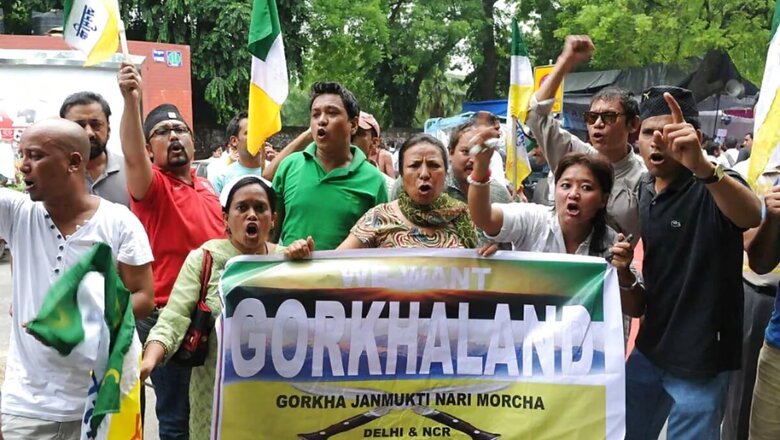
views
After 74 years of a split that spurred one of the largest migrations in human history, there is a buzz in Bengal of another rupture with political leaders mainly from the Bharatiya Janata Party demanding North Bengal as a separate union territory and Jangalmahal to be carved out as a new state. The state’s ruling Trinamool Congress has alleged that the BJP is trying to foment trouble in the state after a defeat in the April-May assembly elections.
On June 13, BJP MP from Alipurduar John Barla demanded a separate UT of North Bengal, while the party’s Lok Sabha lawmaker from Bishnupur, Saumitra Khan, on June 21 said that the Jangalmahal region should be a separate state.
They argued that their demands are based on lack of development in the areas over several decades and poor law and order situation under the present TMC government in the state.
While their statements have drawn mixed reactions, Trinamool leaders have filed a police complaint against them and condemned the “conspiracy to divide Bengal”.
‘Political ploy’
BJP’s influential leader and Alipurduar district president Ganga Prasad Sharma who joined the TMC on June 21 said that the comments made by John Barla were irrelevant and a bid to stay afloat in Bengal’s politics.
Sharma’s switch to Trinamool is a big setback for the BJP because, analysts say, it was largely due to his organisational skills that the saffron party won all the five assembly seats in the region in the assembly polls.
“They should do something constructive for the people instead of fanning the flames of division,” he said about his former party colleagues.
Observers say that the BJP’s central and state leaderships have never been in favour of a separate state of Gorkhaland, for instance. And this time too, almost all the senior party leaders have distanced themselves from Barla and Khan’s statements.
But what stirred up the demands for a division of Bengal?
“Things will become clear if we look at their statements from the other side,” said political expert and professor of Jadavpur University (JU) Partha Pratim Biswas. “Suppose, if they got the majority in the assembly polls, would the stand of these leaders who have talked about bifurcation or trifurcation be the same? I have serious doubts. Interestingly, none of the senior BJP leaders are supporting their demands. I personally believe that such leaders are making these statements just to stay alive in politics while playing with the sentiments of the people in North Bengal and other parts of the state who have been demanding separate states for decades. They are trying to keep the anti-incumbency factor alive for electoral gains; otherwise, none of the regions including Gorkhaland is fitting the criteria for a separate state in terms of economy, geographical factors, cultural and linguistic reasons. Nothing seems to match the criteria.”
Another political expert, Kapil Thakur, said that through such statements, the BJP leaders are trying to instigate the people, especially those demanding a separate state in North Bengal. “I think this is dangerous for a democratic society like India,” he added.
A BJP leader, who did wish to be named, said that the remarks, which drew severe political criticism, have been made on behalf of someone else in the party. “They are trying to justify their demand to carve North Bengal into a separate state, citing national security issues as the region shares a border with Bangladesh, China, Nepal and Bhutan. Also, it consists of Murshidabad and Malda where terror activities in the past were very much evident,” he said.
State BJP president Dilip Ghosh rubbished any claims by the party to divide Bengal and said that some MPs were making such statements out of frustration as North Bengal lags behind in development.
The Gorkhaland movement
Demands for a split are not new in Bengal. The first major one since Independence was the Gorkhaland movement spearheaded by Subhash Ghisingh with a violent agitation in the 1980s.
His agitation, however, suffered a setback after his most-trusted associate Bimal Gurung rebelled and formed his own party, the Gorkha Janmukti Morcha, on October 7, 2007. Gurung forced Ghisingh to leave the hills to spend most of his remaining life in exile in Jalpaiguri.
Over the years, Bimal Gurung, to maintain his prominence in the hills, switched many political camps, from the Trinamool Congress to the BJP and was back to supporting Mamata Banerjee in this year’s assembly polls.
The demand for Gorkhaland began in the 1980s when the people of the hills alleged that they were deprived of basic amenities. With no proper schools, employment, electricity, healthcare units, water, sanitation, etc, a platform for agitation was formed and it slowly gained momentum for a separate state.
The first demand for Gorkhaland was actually submitted during British rule to the Morley-Minto Reforms panel in 1907. Then, in 1952, the All India Gorkha League submitted a memorandum to Prime Minister Jawaharlal Nehru for a separate state.
The Gorkhaland movement reached its peak between 1985 and 1986. Finally, on August 22, 1988, the Gorkha National Liberation Front (GNLF) signed the Darjeeling Hill Accord (DHA) under the leadership of Subhash Ghisingh. Later, the Darjeeling Gorkha Hill Council (DGHC) was formed with an agreement that Ghisingh would give up his demand for a separate Gorkhaland.
Hopes for lasting peace, however, proved illusory. The problem started when the Left Front government in West Bengal decided not to hold DGHC elections, which were due in 2004, and empowered Ghisingh to look after the council. This led to resentment among the workers and Bimal Gurung, who broke all ties with the GNLF. Chatre Subba, who used to head the militant wing of the GNLF, parted ways with Ghisingh over some differences and floated a new outfit — the Gorkha Liberation Organisation (GLO). Ghisingh’s differences with Bimal and Chatre cost him dearly and his party lost all support in the hills.
Ghisingh’s loss was Bimal’s gain. Rising to the defence of Prashant Tamang, an Indian Idol contestant who was insulted by a radio jockey, Bimal soon gained massive public support across the hills. The GNLF lost mass support as most of its supporters joined Bimal’s party — the Gorkha Janmukti Morcha (GJM) – and Ghising shifted his residence to Jalpaiguri.
Over the years, analysts say, a vulnerable political vacuum in North Bengal over various tribal issues including the Gorkhaland demand were exploited by all the political parties and since 2009 the BJP has grown exponentially in this region with the support of tribal people, Dalits and Gorkhas.
Of the 54 assembly seats in North Bengal (there are a total of 294 in the state), Bimal Gurung’s support to the BJP since 2009 was a big factor in at least 17, apart from eight Lok Sabha seats out of the 42 in Bengal.
However, Gurung failed in his attempts to snatch a separate state and gradually lost his clout in the hills as people started questioning his real intentions behind switching political camps.
Demands for Kamtapur and Cooch Behar
The other two movements for a separate state of Kamtapur in 1995 and Greater Cooch Behar in 1998 too created hurdles in Bengal’s development, observers say, but neither was successful.
All three movements were demanding for a separate state or union territory in North Bengal but they fizzled out over the years with various ‘caste based’ (with more focus on Rajbongshi and Kamtapuri) development packages/ boards launched by the Left in the past and Mamata Banerjee recently.
The Greater Cooch Behar movement was started by Bangshi Badan Barman, general secretary of the Greater Cooch Behar People’s Association (GCPA).
Since 1998, the GCPA has demanded a state comprising seven districts of North Bengal along with the Kokrajhar, Bongaigaon and Dhubri districts of Assam.
Barman during many media interactions has claimed that the kingdom of Cooch Behar was taken over by the British rulers through various treaties from 1773 to 1901. Later, the kingdom was returned to the Royal family of Cooch Behar.
On September 12, 1949, the kingdom of Cooch Behar was merged with India as a C-category state through three treaties. However, after the Centre bifurcated the kingdom by invoking old British laws and an old map (the bone of contention), it made Cooch Behar parts of West Bengal and Assam on January 1, 1950.
Similarly, the Kamtapur Movement was started by the Kamtapur Liberation Organisation (KLO) that came into existence on December 28, 1995. Several members of the Koch-Rajbongshi community belonging to the All Kamtapur Students Union (AKSU) organised an armed struggle for liberation and demanded a separate Kamtapur state from the Indian mainland.
The KLO was formed to address the problems of the Koch-Rajbongshi people, including unemployment, poverty, land alienation, non-recognition of the Kamtapuri language, fight for cultural identity, and economic deprivation.
The movement was spearheaded by Tamir Das alias Jibon Singha, who was the chairman of the KLO. He was arrested in October 1999 but once again took control of the outfit after he was released by the Assam police. The other key leader of the movement was Milton Burman alias Mihir Das. He was the second-in-command of the outfit.
The KLO demanded that six districts of West Bengal (Cooch Behar, Darjeeling, Jalpaiguri, North Dinajpur, South Dinajpur, and Malda), four districts of Assam (Kokrajhar, Bongaigaon, Dhubri, and Goalpara), one district of Bihar (Kishanganj) and Jhapa district in Nepal be included in Kamtapur.
All mainstream political parties in Bengal are against the division of the state, say observers. The TMC, BJP, Congress and the Left Front may be against each other ideologically but they are united when it comes to the fight against the forces that intermittently rear up with a separate statehood movement.
Chief minister Mamata Banerjee has already ordered an investigation into the fresh demands and asked the CID to inquire.
Political expert Kapil Thakur feels that such movements will not succeed in Bengal because except for a few fringe elements no one wants to see a division in the state.
The chief minister, taking note of the situation, is likely to visit North Bengal on June 26 to have a series of meetings with party leaders.
“After losing the elections, the BJP leaders are frustrated and trying to divide and rule,” she recently said. “But I would like to tell them that they will have to face the consequences as per law. We will not accept any attempt which will hamper the peace and development of Bengal. Their claim that North Bengal has been neglected is false and fabricated.”
Read all the Latest News, Breaking News and Coronavirus News here.











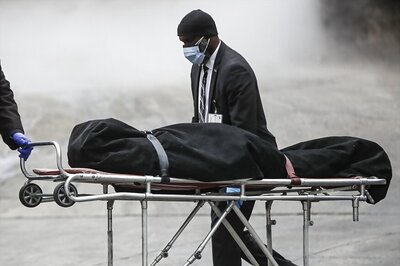
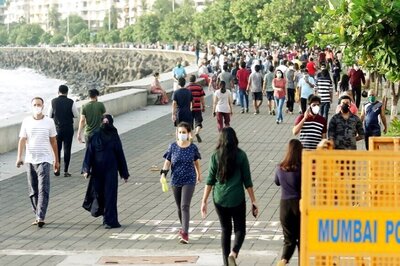

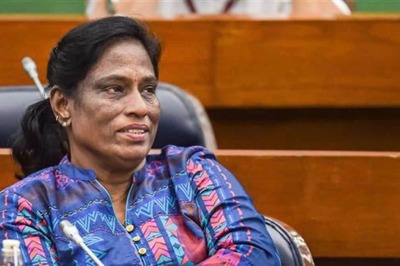

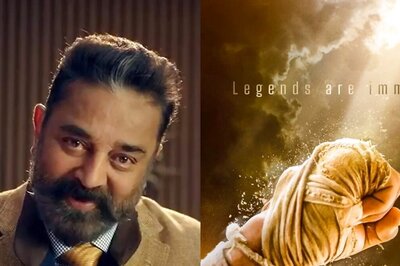

Comments
0 comment